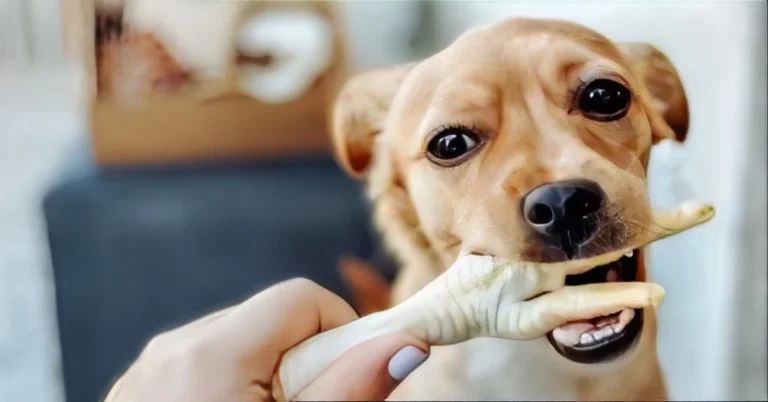Autistic dogs: Causes, Symptoms, Diagnosis, Treatments
Introducing the unusual and sometimes misinterpreted world of autistic dogs, a fascinating subset of dog behavior. It’s critical for us as pet owners to acknowledge and value the variety among our furry friends, especially those that could display characteristics linked to autism.
What Is Autism?
Autism, or Autism Spectrum Disorder (ASD), is a multifaceted neurodevelopmental condition impacting social interaction, communication, and behavior.
The term “spectrum” reflects the broad range of challenges and strengths inherent in ASD, varying from person to person. Common traits include difficulty in social cues, communication challenges, repetitive behaviors, and a preference for routine.
Each individual with autism is unique, and experiences differ widely. While the precise cause remains unclear, a combination of genetic and environmental factors is thought to contribute.
Early diagnosis and intervention play a pivotal role in enhancing outcomes, enabling individuals with autism to navigate the world more effectively and lead fulfilling lives.
Autism in dogs vs human
| Aspect | Autism in Humans | Autism-like Traits in Dogs |
| Definition | Complex neurodevelopmental disorder | Not universally recognized; limited scientific evidence |
| Communication | Impaired verbal and nonverbal communication | May exhibit difficulties in canine communication |
| Social Interaction | Challenges in social cues and interactions | May display difficulties in socializing with dogs/people |
| Repetitive Behaviors | Repetitive movements or activities | Can show repetitive behaviors, such as pacing or licking |
| Routine Preferences | Preference for routine and sameness | May exhibit anxiety or stress in unfamiliar situations |
| Diagnosis | Diagnosed through behavioral assessments | No standardized criteria; behavioral assessments used |
| Treatment | Behavioral interventions, therapy, medication | Limited treatment options; behavioral modification |
| Medical Causes | Genetic and environmental factors | Underlying medical conditions should be ruled out |
| Age of Onset | Typically diagnosed in early childhood | Behavioral issues may manifest in puppyhood |
| Inheritance | Genetic factors play a role | Autism-like symptoms may be inherited in some cases |
| Response to Environment | May be sensitive to sensory stimuli | May exhibit fear or anxiety in certain environments |
What Causes Autism in Dogs?
Understanding of autism in dogs is limited, and the term isn’t commonly used in veterinary medicine. Certain dog behaviors, like repetitive movements or social difficulties, may loosely resemble human autism.
Dog behavioral issues stem from genetics, early experiences, and environmental factors. Some breeds may have predispositions, and early traumas can affect behavior.
It’s crucial to avoid direct comparisons with human autism, and if concerned about a dog’s behavior, consult a veterinarian or certified animal behaviorist for tailored guidance.
How is Autism Diagnosed in My Dog?
Diagnosing autistic dogs poses challenges due to limited evidence, primarily relying on observed repetitive behaviors and impaired social interaction with both dogs and people.
Before confirming such a diagnosis, veterinarians must rule out other medical and behavioral conditions.
While behavioral tests can provide insights into a dog’s responses, they are not definitive, as conditions like canine anxiety can mimic autism-like symptoms.
Unlike human autism, canine dysfunctional behavior lacks a spectrum, prompting veterinarians to rely on behavioral cues compared to what’s considered normal for dogs. Notably, symptoms manifest during puppyhood, and autism in dogs is an inherited disorder, unrelated to environmental factors or vaccines.
If you suspect your puppy or young dog may have autism, consulting your local veterinarian is crucial for a comprehensive evaluation and appropriate guidance.
What are the Symptoms of Canine Dysfunctional Behavior in Dogs?
Canine dysfunctional behavior can manifest in various ways, and the symptoms may indicate underlying issues that require attention.
While these behaviors do not necessarily equate to a diagnosis of autism in dogs, they can signal the need for behavioral evaluation and intervention. Some common symptoms of dysfunctional behavior in dogs include:
Repetitive Actions
Dogs may engage in repetitive behaviors, such as excessive tail chasing, paw licking, or pacing. These actions can be a response to stress or discomfort.
Aggression
Uncharacteristic aggression, whether directed towards other animals, people, or objects, can be a sign of underlying behavioral issues. Fear, anxiety, or territorial instincts may contribute to aggressive behavior.
Excessive Barking or Vocalization
Persistent barking, whining, or howling beyond typical communication may indicate anxiety, loneliness, or a need for attention.
Avoidance or Isolation
Dogs displaying excessive shyness, hiding, or avoiding social interactions may be experiencing fear or discomfort in certain situations.
Destructive Behavior
Chewing furniture, excessive digging, or other destructive actions may be a response to boredom, anxiety, or an attempt to alleviate stress.
Inappropriate Elimination
Accidents that occur within the home, particularly if the dog is housebroken, may indicate tension, worry, or a health problem.
Changes in Eating Habits
Sudden changes in appetite or eating habits may indicate stress, illness, or discomfort.
Excessive Attachment
Dogs displaying intense and persistent attachment to a particular person or object may be coping with anxiety or insecurity.
It’s important to note that these symptoms can have various causes, including medical issues, lack of proper training, or environmental stressors.
Consulting with a veterinarian or a certified animal behaviorist is recommended to assess the root cause of dysfunctional behavior and develop an appropriate intervention plan tailored to the individual needs of the dog.
How is Autism Treated in Dogs?
Before considering any treatment for canine behavioral issues, it’s imperative to seek a thorough diagnosis from a licensed veterinarian.
Identifying and ruling out potential medical conditions is the first step before addressing any underlying emotional concerns. While the concept of autistic dogs is not universally accepted, if a diagnosis is made, various strategies may be recommended:
Medication
Although there isn’t a standardized treatment for autistic dogs, veterinarians may prescribe medications to alleviate symptoms and manage compulsive behaviors.
Fluoxetine (Prozac), used for treating OCD and autism in people, might be suggested, along with other medications to calm the dog and address aggressive tendencies.
Safe and Secure Space
Creating a safe environment is crucial for dogs exhibiting autism-related behaviors, as they may be fearful of various stimuli. Providing a secure place, such as a dog kennel or bed, can offer comfort and refuge.
Stress-Free Environment
Recognizing and avoiding situations that cause stress or anxiety is essential. Respecting the dog’s preferences, whether it’s avoiding petting or interactions with people and other animals, helps minimize potential stressors.
Regular Exercise
Consistent exercise not only promotes physical health but can also reduce anxiety and stress. Keeping the dog active provides mental stimulation and helps distract from compulsive behaviors.
Well-Balanced Diet
A nutritionally balanced diet is vital for overall well-being. Collaborate with your veterinarian to determine the most suitable diet and feeding regimen for your dog.
Positive Reinforcement
Enlisting the help of trainers or therapists specializing in positive reinforcement can be valuable. Seek professionals experienced in working with dogs exhibiting behavioral issues, as they play a crucial role in managing dogs with perceived autistic behaviors.
Remember, individual dogs have unique needs, and a tailored approach is essential. Consult with veterinary professionals and specialists to develop a comprehensive and effective plan to address your dog’s specific behavioral challenges.
Stay informed about the evolving field of veterinary science for the latest insights into canine behavior.
Frequently Asked Questions
A variant of autism spectrum illness known as high-functioning autism affects everyone differently and to differing degrees.
It is typified by limited and repetitive habits and interests, as well as challenges with social communication and engagement.
In addition, there may be aggressive outbursts, excessive gazing, and poor impulse control. The connection is not just with action, though.
According to Parthasarathy, “it is reasonable to consider that neurodivergent disorders can exist as there are clearly many similarities between dog and human neurochemistry.”
There’s no hard and fast answer to this one, however some study indicates that dogs may display behaviors resembling those of autistic humans.
For instance, dogs who exhibit symptoms similar to autism may find it difficult to socialize with people, engage in repetitive activities, or have sensory issues.
Dogs’ Autism Risk Factors
First of all, male canines with autism spectrum disorders predominate. Additionally, some breeds are more sensitive than others; bull terriers being the most at danger.
Nicholas Dodman, a veterinary behaviorist at Tufts University, discovered that up to 85% of bull terrier litters exhibit obsessive tail-chasing behavior.
Conclusion
In conclusion, addressing canine behavioral issues, like autism, requires an informed, individualized approach. While canine autism lacks scientific consensus, recognizing uniqueness is vital.
Spotting symptoms, seeking professional guidance, and creating a supportive environment with medication, secure spaces, and balanced care are crucial.
Canine behavior complexity, influenced by genetics and environment, demands collaboration with experts. Staying informed enables adaptive strategies, deepening bonds with our cherished pets.






